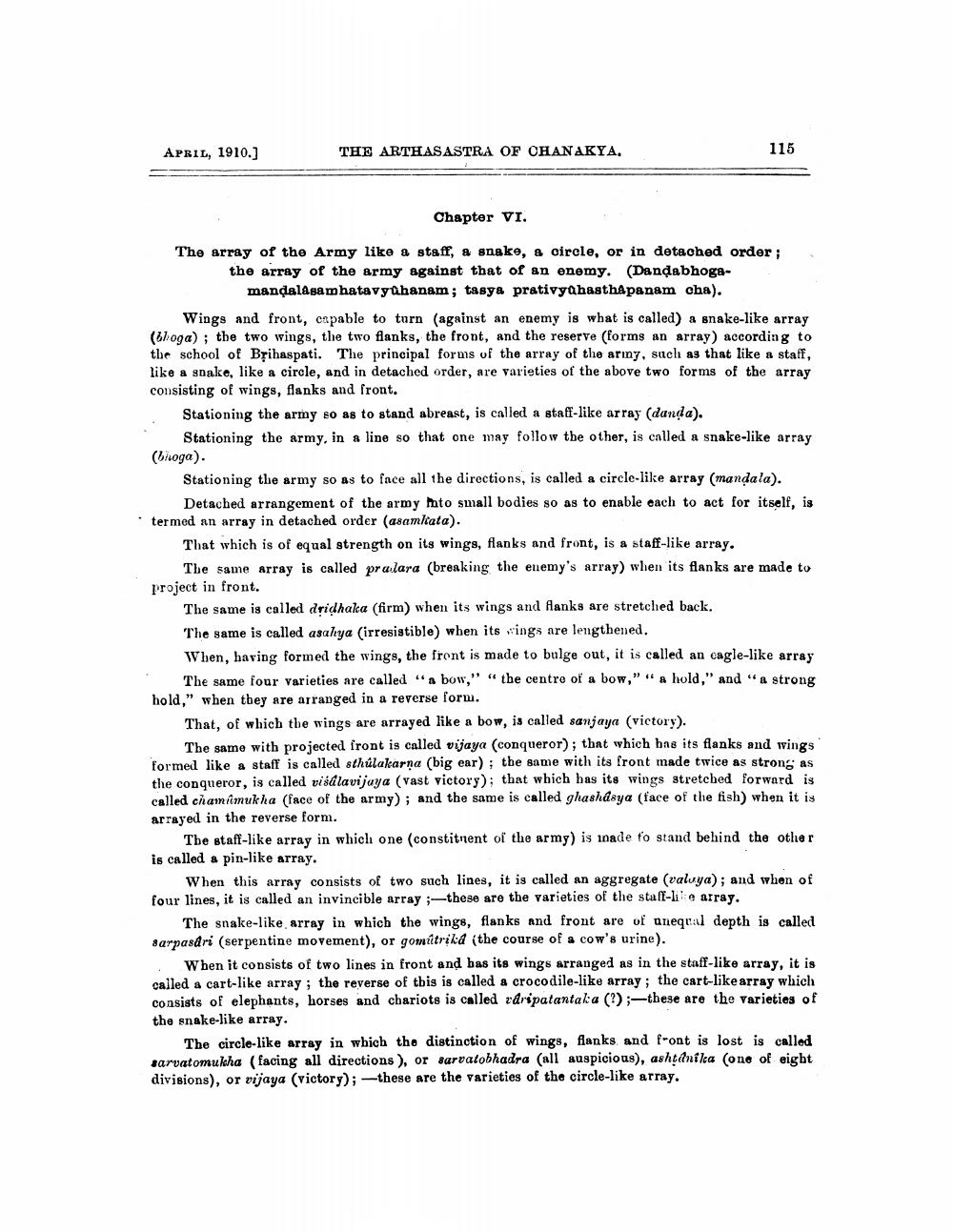________________
APRIL, 1910.)
THE ARTHASASTRA OF CHANAKYA.
115
Chapter VI.
The array of the Army like a staff, a snake, & circle, or in detached order;
the array of the army against that of an enemy. (Dandabhoga
mandalasam hatavyuhanam; tasya prativyahasthapanam cha). Wings and front, capable to turn (against an enemy is what is called) a snake-like array (iloga); the two wings, the two flanks, the front, and the reserve (forms an array) according to the school of Bțihaspati. The principal forms of the array of the arıny, such as that like a staff, like a snake, like a circle, and in detached order, are varieties of the above two forms of the array consisting of wings, flanks and front.
Stationing the army so as to stand abreast, is called a staff-like array (danda).
Stationing the army, in a line so that one may follow the other, is called a snake-like array (broga).
Stationing the army so as to face all the directions, is called a circle-like array (mandala).
Detached arrangement of the army mto small bodies so as to enable each to act for itself, is termed an array in detached order (asamlata).
That which is of equal strength on its wings, flanks and front, is a staff-like array.
The same array is called prulara (breaking the enemy's array) when its flanks are made to project in front.
The same is called dridhala (firm) when its wings and flanks are stretched back. The same is called asahya (irresistible) when its wings are lengthened. When, having formed the wings, the front is made to bulge out, it is called an cagle-like array
The same four varieties are called "a bow," "the centre of a bow," "a hold," and "a strong hold," when they are arranged in a reverse form.
That, of which the wings are arrayed like a bow, is called sanjaya (victory).
The same with projected front is called vijaya (conqueror); that which has its flanks and wings formed like a staff is called sthúlakarna (big ear); the same with its front made twice as strong as the conqueror, is called višalavijaya (vast victory); that which has its wings stretched forward is called chamimukha (face of the army); and the same is called ghashásya (face of the fish) when it is arrayed in the reverse form.
The staff-like array in which one (constitnent of the army) is inade to stand behind the other is called a pin-like array.
When this array consists of two such lines, it is called an aggregate (valuya); and when of four lines, it is called an invincible array ;—these are the varieties of the staff-like array.
The snake-like array in which the wings, flanks and front are of unequal depth is called sarpasari (serpentine movement), or gomutrikd (the course of a cow's urine). . When it consists of two lines in front and bas its wings arranged as in the staff-like array, it is called a cart-like array; the reverse of this is called a crocodile-like array; the cart-like array which consists of elephants, horses and chariots is called vdripatantaka (?);these are the varieties of the snake-like array.
The circle-like array in which the distinction of wings, flanks and front is lost is called sarvatomukha (facing all directions ), or sartalobhadra (all auspicious), ashtanilca (one of eight divisions), or vijaya (victory); these are the varieties of the circle-like array.




